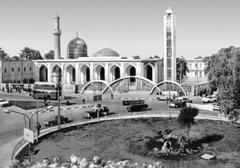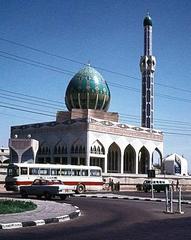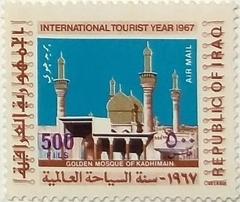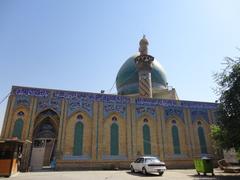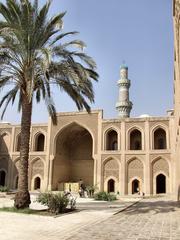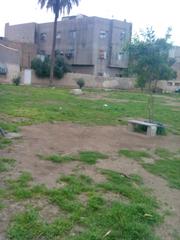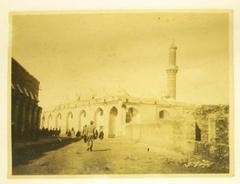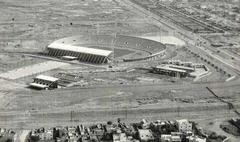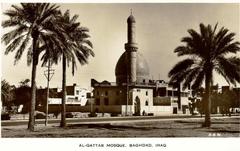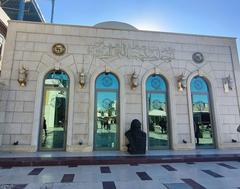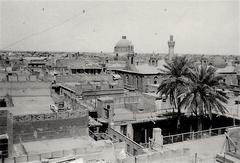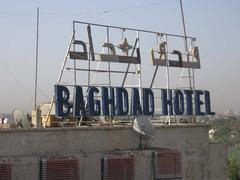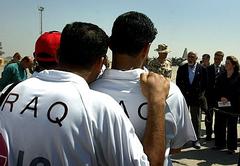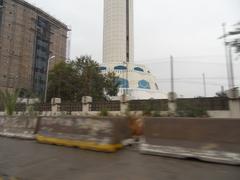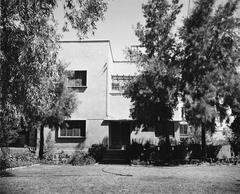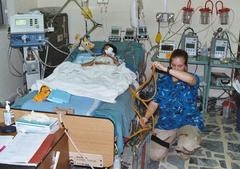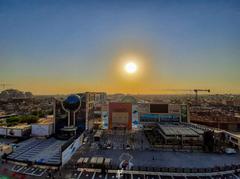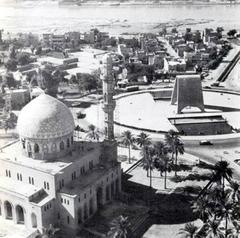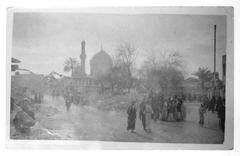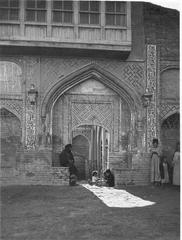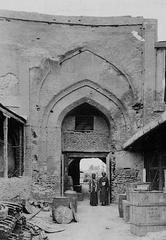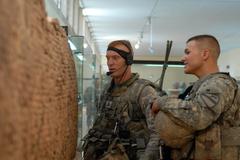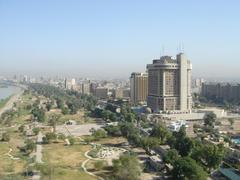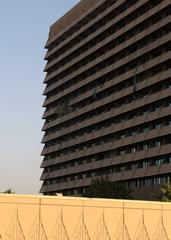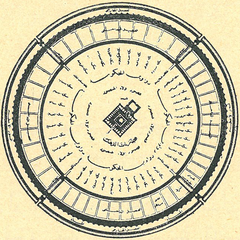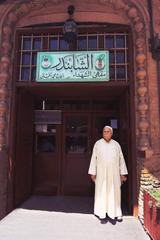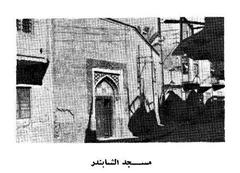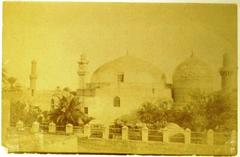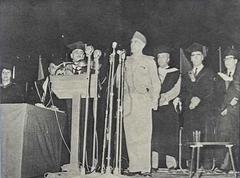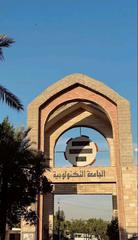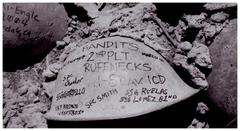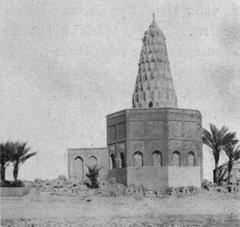Meir Taweig Synagogue Visiting Hours, Tickets, and Historical Significance in Baghdad
Date: 14/06/2025
Introduction
The Meir Taweig Synagogue, nestled in Baghdad’s historic Al-Bataween district, stands as the last vestige of a once-vibrant Jewish community that shaped the city for centuries. Constructed in the mid-20th century, it is not only a rare survivor among Iraq’s Jewish religious sites but also a living testament to the resilience and cultural richness of Iraqi Jewry. This guide details the synagogue’s history, architecture, cultural significance, current condition, practical visitor information—including hours and ticketing—and guidance for those interested in heritage preservation and cultural exploration (Voices for Iraq; aish.com; Diarna).
Historical Overview
Foundation and Early Years
Built between 1942 and 1946 in the prosperous Bataween district, the Meir Taweig Synagogue emerged during Baghdad’s golden age of Jewish life. At the time, Jews comprised nearly a third of the city’s population, contributing significantly to commerce, government, and culture. Bataween was home to many Jewish institutions, businesses, and families, making the synagogue both a religious center and a community anchor (Voices for Iraq; Times of Israel).
The Golden Age and Decline
Throughout the first half of the 20th century, the synagogue thrived as a hub for worship, education, and social gatherings. However, the Farhud pogrom in 1941 and subsequent waves of anti-Jewish violence and state persecution led to the mass exodus of Iraqi Jews. By the early 2000s, the local Jewish population had dwindled to a handful, and the Meir Taweig Synagogue became the last active synagogue in Iraq (Diarna; Mosaic Magazine).
Architectural Features
Exterior and Setting
Located in the heart of Bataween, the synagogue’s façade is understated, constructed from locally sourced brick and stone to withstand Baghdad’s harsh climate. Its design is consistent with early 20th-century Baghdadi Jewish architecture, blending Middle Eastern and Jewish liturgical elements (aish.com).
Interior and Symbolism
Inside, the synagogue features a central prayer hall with a bimah (raised platform) and an eastern-facing Torah ark. The interior, once celebrated for its sky-blue walls and columned design, is now faded but still displays Hebrew inscriptions and symbolic carvings. Notably, the wooden ark houses Torah scrolls handwritten on gazelle leather—a rare tradition (MySinChew). Marble plaques engraved with menorahs and psalms flank the ark, and shanasheel latticework echoes the broader neighborhood’s Jewish homes (aish.com).
Climate Adaptations
The building’s thick walls, high ceilings, and carefully placed windows provide insulation and ventilation suited to Baghdad’s extreme heat, ensuring comfort for worshippers (aish.com).
Cultural and Religious Significance
The Meir Taweig Synagogue was central to the religious and cultural life of Iraqi Jews—hosting prayers, festivals, life-cycle events, and educational activities. Its continued existence, even with only a few congregants, underscores a narrative of resilience and hope. The synagogue not only preserves the memory of Iraqi Jewry but also symbolizes Baghdad’s multicultural past (Diarna; aish.com).
Current Status and Preservation Challenges (as of June 2025)
Physical Condition
Decades of neglect, conflict, and demographic change have left the synagogue in a precarious state. The building’s exterior is largely concealed, with padlocked doors and deteriorating interiors—crumbling walls, peeling paint, and decaying steps. The ark and Torah scrolls remain, but are at risk due to the building’s fragility (100hala-iq.com; Times of Israel).
Security and Accessibility
Since 2003, the synagogue has been closed to the public for security reasons. Visits are rare, requiring advance coordination through heritage organizations or trusted local guides. Only a few elderly members of the Jewish community, along with occasional help from Muslim neighbors, maintain the site (Wikipedia; TravelInsighter).
Preservation Efforts
Despite periodic restoration attempts—most notably under Saddam Hussein—ongoing decay and lack of resources hamper preservation. International organizations highlight the urgent need for intervention before the synagogue and its artifacts are irretrievably lost (Mosaic Magazine; Diarna).
Visiting Information
Hours and Tickets
- Visiting Hours: The synagogue is not open to the general public. Visits can only be arranged by appointment, typically for researchers, journalists, or through organized heritage tours.
- Tickets: No official ticketing system or entrance fee exists. Donations for preservation are welcomed when visits are arranged.
Arranging a Visit
To request access, contact local heritage organizations such as Diarna or Foundation for Jewish Heritage, or coordinate with reputable local guides. Expect significant advance planning and security vetting.
Accessibility and Safety Tips
- Location: Bataween district, central Baghdad. The synagogue’s exterior is subtle; look for the Hebrew inscription above the entrance (Spirit Travelers).
- Security: Stay updated on local conditions and travel advisories. Always arrange for a knowledgeable local guide and avoid solo visits, especially at night.
- Photography: Permission is required for any photography. Respect guidelines and avoid photographing people or religious artifacts without consent.
Nearby Attractions
- Bataween District: Once a thriving Jewish quarter, it still features traditional architecture, shanasheel windows, and remnants of Jewish homes.
- Other Sites: Explore the National Museum of Iraq, Al-Mutanabbi Street, Shabandar Café, and the restored shrine of Rabbi Isaac Gaon (Al Jazeera).
- Historic Quarters: Al-Tawrat and Al-Turat, former centers of Jewish life, offer further context for visitors interested in Baghdad’s multicultural past (Spirit Travelers).
Preservation and Community Initiatives
The dwindling Jewish community, supported by international heritage organizations, continues to advocate for the synagogue’s protection. Documentation, awareness campaigns, and virtual tours are among the efforts to preserve its memory and promote restoration (Diarna; Foundation for Jewish Heritage).
Frequently Asked Questions (FAQ)
Q: Can I visit the Meir Taweig Synagogue?
A: The synagogue is generally closed to the public. Visits are possible only with special permission and must be arranged through heritage organizations or local guides.
Q: Are there set visiting hours or ticketing?
A: No standard hours or tickets are available due to security and preservation concerns.
Q: Is the synagogue accessible to those with mobility challenges?
A: Accessibility is limited due to the building’s condition. Some areas may not be suitable for visitors with mobility issues.
Q: Can I take photographs inside?
A: Only with explicit permission. Always respect privacy and religious customs.
Q: How can I support preservation?
A: Engage with organizations like Diarna or the Foundation for Jewish Heritage, contribute to documentation projects, and raise awareness.
Visual and Digital Resources
- High-resolution images of the synagogue’s exterior and interior (with alt text: “Meir Taweig Synagogue in Baghdad, last functioning synagogue in Iraq”).
- Maps highlighting the Bataween district and Jewish heritage sites in Baghdad.
- Links to virtual tours and digital archives when available.
Summary and Visitor Tips
The Meir Taweig Synagogue endures as a powerful emblem of Baghdad’s pluralistic history and the resilience of its Jewish community. Though access is highly restricted, those able to visit are offered a profound connection to a rich and often overlooked chapter of Middle Eastern history. Heritage enthusiasts are encouraged to support preservation initiatives and explore digital resources to ensure this irreplaceable cultural treasure survives for future generations (Mosaic Magazine; TravelInsighter).
Sources and Further Information
- Voices for Iraq
- Times of Israel
- aish.com
- trek.zone
- Mosaic Magazine
- 100hala-iq.com
- TravelInsighter
- Wikipedia
- Diarna
- MySinChew
- Spirit Travelers
- Foundation for Jewish Heritage
- American Society of Overseas Research (ASOR)
- Al Jazeera
For the latest updates and in-depth guides on historical and cultural sites in Baghdad, download the Audiala app and follow us on social media.
